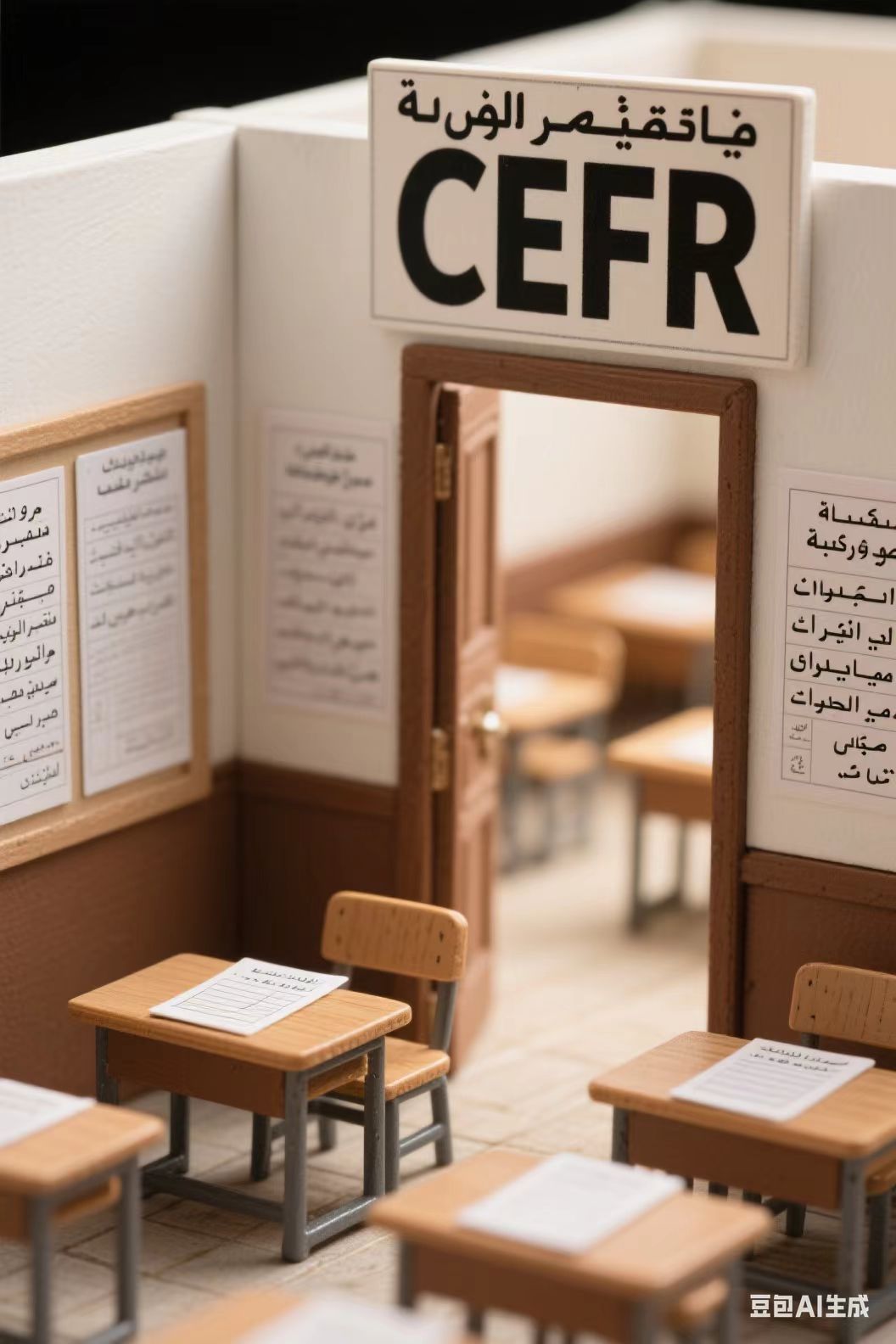
According to the CEFR standard and the official Arabic examination structure, the Arabic proficiency is divided into six levels A1-C2. The ability description and vocabulary requirements of each level are as follows:
grade | Corresponding to CEFR level | Vocabulary requirements | Ability description |
A1 | beginner | About 1,000 words | Understand and use basic greetings, self-introduction and other simple sentences to complete daily tasks such as shopping and filling in forms. |
A2 | Basic level | About 2,500 words | It can describe personal experiences, express needs, understand simple notifications, and deal with travel planning, medical treatment and other scenarios. |
B1 | middle rank | About 4,000 words | Be able to express opinions independently, participate in work meetings or academic discussions, handle letters and reports, and complete business email writing. |
B2 | middle and high ranking | About 6,000 words | Understand complex texts, conduct business negotiations or academic papers, and deal with professional scenarios such as policy document interpretation. |
C1 | senior | About 8,000 words | Be able to handle legal documents, conduct academic research, master professional terms, and fluently deal with complex situations. |
C2 | Master level | Native language level | He can write literature, interpret simultaneously, understand implicit meanings and use language freely. |
1. A1-A2: slow speaking speed, content is daily conversation (such as shopping, greetings), short notifications, questions include multiple choice, matching questions, focus on the understanding of basic vocabulary and simple sentence structure. Listening materials are mixed with standard language (Modern Standard Arabic) and major dialects such as Egypt, Levant.
2. B1-B2: Add news, stories, lectures and other content. The speaking rate is moderate. The questions include fill-in-the-blank questions and short-answer questions to test the ability of detail retrieval and induction.
3. C1-C2: Academic lectures, original sound of films and TV, fast speech rate, professional terms and complex sentence patterns are used. Logical relationship and deep meaning are examined through multiple choice questions and listening review questions.
1. A1-A2: Human-computer dialogue form, reading words and short sentences, and conducting simple questions and answers (such as introducing the family). The focus is on the accuracy of pronunciation (such as throat sound and trill) and the use of basic vocabulary.
2. B1-B2: Video recording or real-time dialogue, describing a given topic (such as "travel experience"), participating in situational dialogue, testing grammatical correctness and fluency of expression.
3. C1-C2: Engage in a deep discussion with the examiner on professional topics (such as "the impact of artificial intelligence on society"), deliver a speech, and assess the naturalness of language organization, logical thinking, and intonation. The oral examination follows the format of the official Arabic spoken language test. The oral examination can be assisted by voice recognition technologies like Huawei and iFLYTEK, achieving an accuracy rate of over 95%.
1. A1-A2: simple passages with pictures, multiple choice and matching questions to test basic comprehension. The text is in standard language and avoids dialect spelling.
2. B1-B2: covers narrative, expository and other genres, with increased length, fill-in-the-blank questions and short-answer questions to test understanding of the main idea and details.
3. C1-C2: It involves academic papers, literary works and so on. The questions include multiple choice questions and article summary questions, which examine the ability of analysis, generalization and critical thinking.
1. A1-A2: Write simple words and sentences, describe a scene according to the picture (such as "describe a family photo"), examine the use of basic grammar.
2. B1-B2: Write short articles (such as "My Day"), letters and other applied texts, requiring coherent language and complete content.
3. C1-C2: Writing argumentative essays and academic reports, with clear viewpoints, sufficient evidence and clear logic (such as "The Influence of Arab Culture on the World"), which will test advanced language skills and depth of thought.
Independent modules: multiple choice questions, fill-in-the-blank questions, etc., to test the rules of Arabic grammar (such as noun conjugation, verb transformation) and vocabulary application ability, covering the grammar priorities of each level (such as noun conjugation for A1, complex clauses for B2).
1. Listening, written test, and grammar vocabulary: Online computer-based exam, time-limited completion, system automatically times and collects answers, supports Arabic RTL (Right-to-Left) layout and special character input (such as "ا", "ب", "ت"). The technical implementation refers to cases like Google Maps, setting the direction: rtl; through CSS style settings, and adjusting component layouts to ensure text is displayed from right to left.
2. Oral test: real-time video call, scored by native Arabic examiner, or assisted by intelligent oral assessment system, focusing on pronunciation accuracy, fluency and grammatical correctness.
1. Listening, reading and grammar vocabulary: objective questions are graded according to the correct or wrong answers, and subjective questions are graded according to the completeness of key points, language accuracy and other dimensions, and are evaluated by teachers manually.
2. Oral English: The score is quantified from pronunciation (30%), fluency (30%), grammar (20%), vocabulary (10%), and content (10%), with reference to CEFR and the official Arabic scoring criteria. The pronunciation score can be detected by speech recognition technology to detect features such as throat sound and trill.
3. Writing: score from three aspects: content (clear point of view, sufficient evidence), structure (clear logic), language (rich vocabulary, correct grammar). The total score is 100 points, and each module should reach more than 60 points to pass.
4. Total score: 100 points for each item, and the average score of 55 points or above is passed. Students with weak subjects but qualified in total score are allowed.
1. Regular exams: All levels of exams will be organized at fixed times every quarter (such as January, April, July and October), and the plan will be announced two months in advance to facilitate candidates' preparation.
2. Test on the go: For A1-A2 level, candidates will be arranged to take the test within 7 days after successful registration, with flexible options.
1. Official cooperation: In cooperation with the League of Arab States and the Examination Center of the Ministry of Education of China, we will issue internationally recognized Arabic proficiency certificates with CEFR level marked on the transcript to enhance the authority of the examination.
2. Validity of the result: The certificate is valid for life. Those who fail in a single subject can take a make-up exam within one year, and the result will be retained until the next exam.
1. Anti-cheating measures: Camera monitoring, screen recording, browser locking and other technologies are used to identify abnormal behaviors (such as screen cutting and voice interference) with AI algorithm to ensure the fairness of the exam.
2. Special character support: The test system is compatible with Arabic input, providing virtual keyboard or shortcut key switch (such as "Alt+Shift" to switch input method), ensuring that candidates can answer questions smoothly.
1. Official questions: Provide the official Arabic test of the League of Arab States and CATTI, covering all types of listening, reading, writing and speaking questions. You can download or access the link through the platform.
2. Learning tools: It is recommended to use textbooks such as "Newly Compiled Arabic" and "Arabic for Beginners", and combine GreekPod101, Memrise and other APPs for fragmented learning.
3. Oral training: Improve practical ability through role-playing, simulated oral test by foreign teachers, correct pronunciation by referring to Forvo pronunciation dictionary, and strengthen situational dialogue by using textbooks such as "Arabic Life Situations Oral".
1. Accent coverage: the listening material is mixed with standard Arabic and major dialects such as Egypt and Levant, and the writing part accepts standard Arabic spelling habits.
2. Cultural neutrality: Avoid regional bias in reading and writing topics, taking into account the cultural background of the Arab and other Arabic-speaking regions to ensure that the content of the test is neutral. For example, when discussing the influence of Arab culture, cover the contributions of different countries.
This solution integrates the practical needs of Arabic language exams with international standards, balancing practicality and authority. It effectively assesses learners' language proficiency and provides a clear learning path. By collaborating with official Arab institutions, it ensures the international recognition of the certification. Additionally, advanced technology is used to ensure exam fairness, offering a comprehensive Arabic language proficiency test solution for online education platforms.

Cool Mango focuses on the online language teaching and learning with all foreign teachers for multiple languages. It aims to popularize online language teaching and learning globally, recruit and train professional teachers worldwide, and create the unique Cool Mango teaching method. It builds an efficient language learning mode and environment with real teaching by native foreign teachers and real-time translation assistance of AI, providing high-quality online language courses and online communication platform for everyone.
 |
  |
  |
Copyright © Cool Mango Co. Ltd. All Rights Reserved. / Privacy Statement / User-agreement











